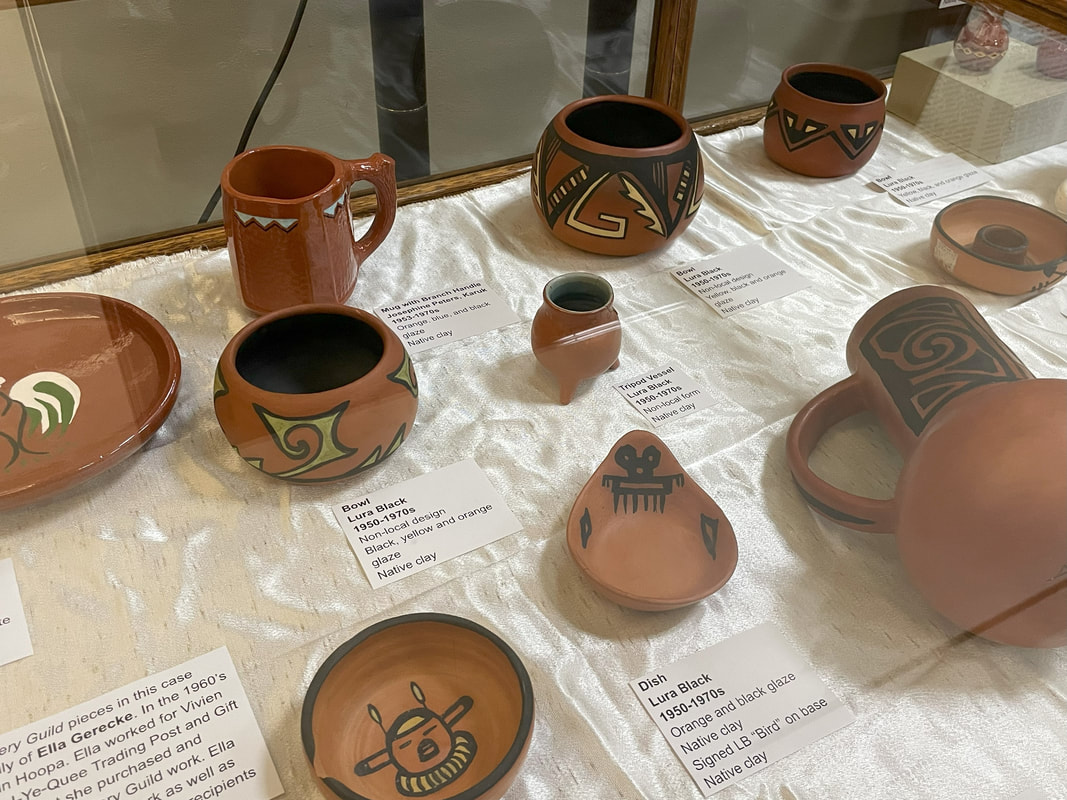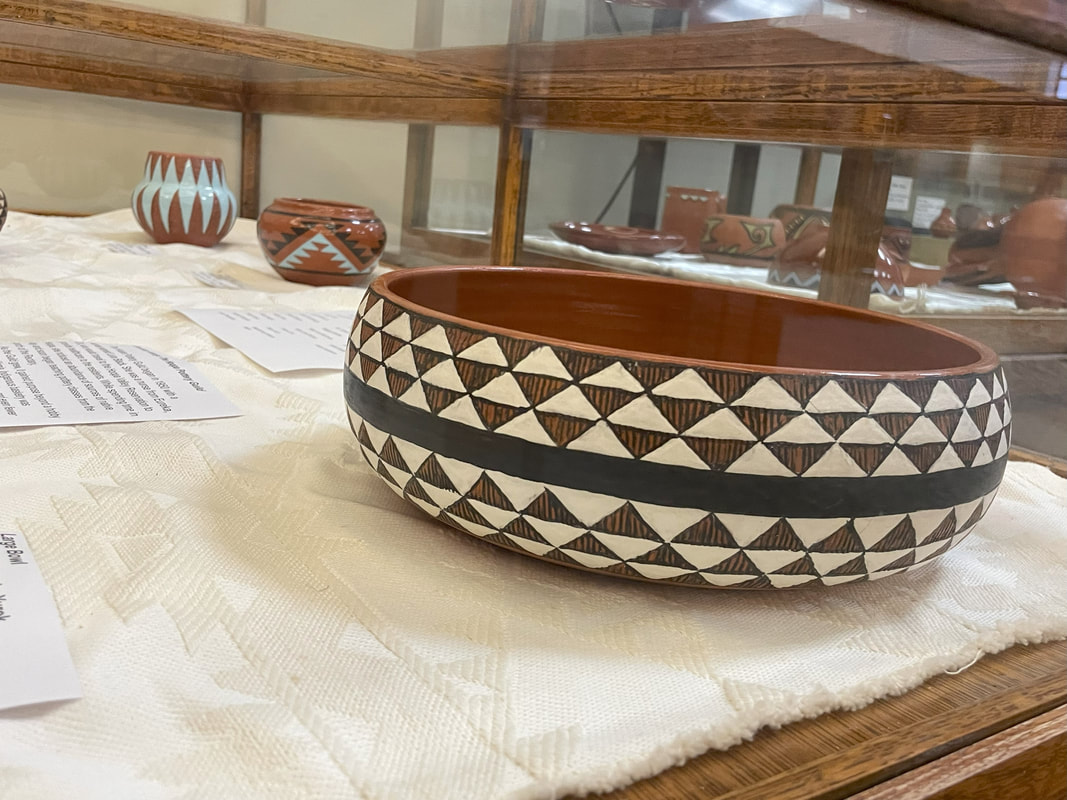Sculpting History: The Hoopa Pottery Guild
Sculpting History: The Hoopa Pottery Guild
The Hoopa Pottery Guild began in 1950 with a woman named Lura Black. She was a nurse from Eureka, CA, who would travel to the Hoopa Valley Reservation to provide healthcare to the residents. While spending time in Hoopa, she noticed an abundance of sources of native clay and soon began teaching pottery classes from the porch of the Rectory.
As the Guild grew, it gained purpose beyond a hobby craft. Across California, Indigenous basketry was declining. Fewer people were weaving, and even fewer were learning how to. Significant barriers caused the decline, including pesticide use, fire suppression, lack of land access, forced removals and relocations, boarding schools, and social stigmas, among many other reasons.
The Hoopa Pottery Guild provided a place for people to come together and share knowledge about basketry, from designs to gathering sites to teaching each other to weave. Eventually, members such as Vivien Hailstone became a significant influence in the revival of basket weaving across California. Due to the advocacy, bravery, and determination of people like her, basket weaving is still a crucial part of practicing Indigenous culture today.
The Hoopa Pottery Guild began in 1950 with a woman named Lura Black. She was a nurse from Eureka, CA, who would travel to the Hoopa Valley Reservation to provide healthcare to the residents. While spending time in Hoopa, she noticed an abundance of sources of native clay and soon began teaching pottery classes from the porch of the Rectory.
As the Guild grew, it gained purpose beyond a hobby craft. Across California, Indigenous basketry was declining. Fewer people were weaving, and even fewer were learning how to. Significant barriers caused the decline, including pesticide use, fire suppression, lack of land access, forced removals and relocations, boarding schools, and social stigmas, among many other reasons.
The Hoopa Pottery Guild provided a place for people to come together and share knowledge about basketry, from designs to gathering sites to teaching each other to weave. Eventually, members such as Vivien Hailstone became a significant influence in the revival of basket weaving across California. Due to the advocacy, bravery, and determination of people like her, basket weaving is still a crucial part of practicing Indigenous culture today.


